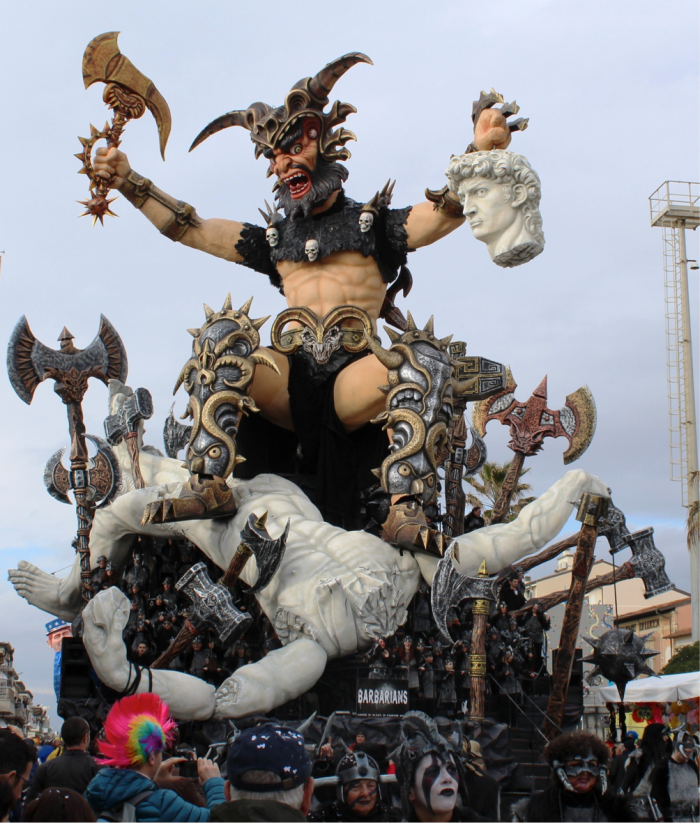
Iran’s President Hassan Rouhani was on an institutional visit to Rome a few weeks ago, where the Colosseum, the Capitoline Museum and the Vatican were included as part of his tour. After meeting with the Italian Prime Minister in the Capitol for a press conference, they walked together around wings of the Capitoline Museum.
We are less interested in the political and economic goals of their meeting than we are in something else that happened in those circumstances, something so serious that the international press has discussed it at length.
The fact is that at some point, an unknown “someone” decided to spare the Iranian President embarrassment by covering all the nude statues in the Museum, so that just wooden panels could be shown in those corridors. Someone unknown, because neither the Prime Minister, Matteo Renzi, nor the Italian Culture Minister, Dario Franceschini, said that the “incomprehensible” move had been authorized by them. It was confirmed by President Rouhani that Iran had not contacted Italian officials about the issue; however, he said he appreciated the welcome he had received.
More than one month has passed, and we still do not know who was effectively in charge of the official decision to cover statues. It is not institutional responsibilities that we are investigating and debating here. What we are interested in is even more serious and dangerous.
I would like to get past the most obvious and documented issues. For example: many Italians read this cover up as a form of cultural “submission”. Rouhani’s culture and religion doesn’t appreciate the portrayals of naked bodies (however, some Iranian intellectuals could deny this statement), so we cover our ancient Roman statues in order to respect his values and offer our hospitality. But what about our social identity? Having Italian identity does not simply involve citizenship, but also involves the history of the country, made by the Romans, shaped by the Middle Ages and by the Popes. All that is preserved in our artistic heritage still reveals its truth to us. Art is always the expression of the history to which we belong.
So, are we going to start covering statues with the purpose of clouding our nationality and our history? Politicians active in supporting patriotism use events like this as flags for their propaganda.
A second, less nationalist and more universal question can be asked: is it correct to take leave of the values of our classical western heritage in order to guarantee the best welcome to a different culture? It is surely one of the most disputable topics these days, and ethics and multiculturalism have much to say to each other. The effort of building healthy identities cannot overlook the comparison and the inclusion of differences, but the reverse is also true, that the effort of maintaining healthy differences cannot exclude solid identity awareness. From this point of view we can quite agree that something failed at the Capitoline Museum, and a good opportunity for dialectic reasoning was missed.
A third issue can be taken into consideration in addition to the previous ones: Firm religious beliefs always generate social representations of associated life.
When we believe differently, do we still have to to share a common social representation in order to respect each other? Is the disposition of respect as a moral essential attitude still valid when we decide to accept and keep alive different beliefs, even if we are not capable of sharing practices arising from those convictions?
Again, it seems to be a burning subject for moral philosophers. But as I wrote at the start, there is a substantial and basic issue I would like to point out. It is an aesthetic issue involved in our civilization. First of all, the idea of covering up those statues to not offend the religious perception and the moral values of the guest turned out to be a really dangerous and disastrous venture, no matter who the guests are and what they believe. It was a negative initiative by itself, because it neglected one of the greatest cultural achievements in the last two centuries.
I am talking about the autonomy of art and aesthetics.
Considering Kant’s Critique of Judgment, going through Hegel’s Aesthetics, mentioning Benedetto Croce’s The Essence of Aesthetics and his views on art and poetry (just to state relevant philosophers, but many others could be mentioned to support this debate), it becomes clear that our civilization has grown by developing a concept of freedom that is essential to art and its expression. Art has its own representations, reasons and knowledge, apart from ethics and religion, even though it always sits in a hermeneutical space shared with logic, ethics, economics and religion. If we “cover up” this freedom related to aesthetics, with such a quick unaware gesture, we must really take seriously the risk of slowly covering up a long (and eminent) history of struggle for freedom and democracy.
Fabrizia Abbate is Professor of Aesthetics in the Department of Education, at Roma Tre University of Rome. Qualified Associate Professor in Ethics in 2014. Her research studies are in Hermeneutics and Contemporary Continental Philosophy. In Fall 2014, she was a Visiting Scholar at the University of Chicago Department of Philosophy.